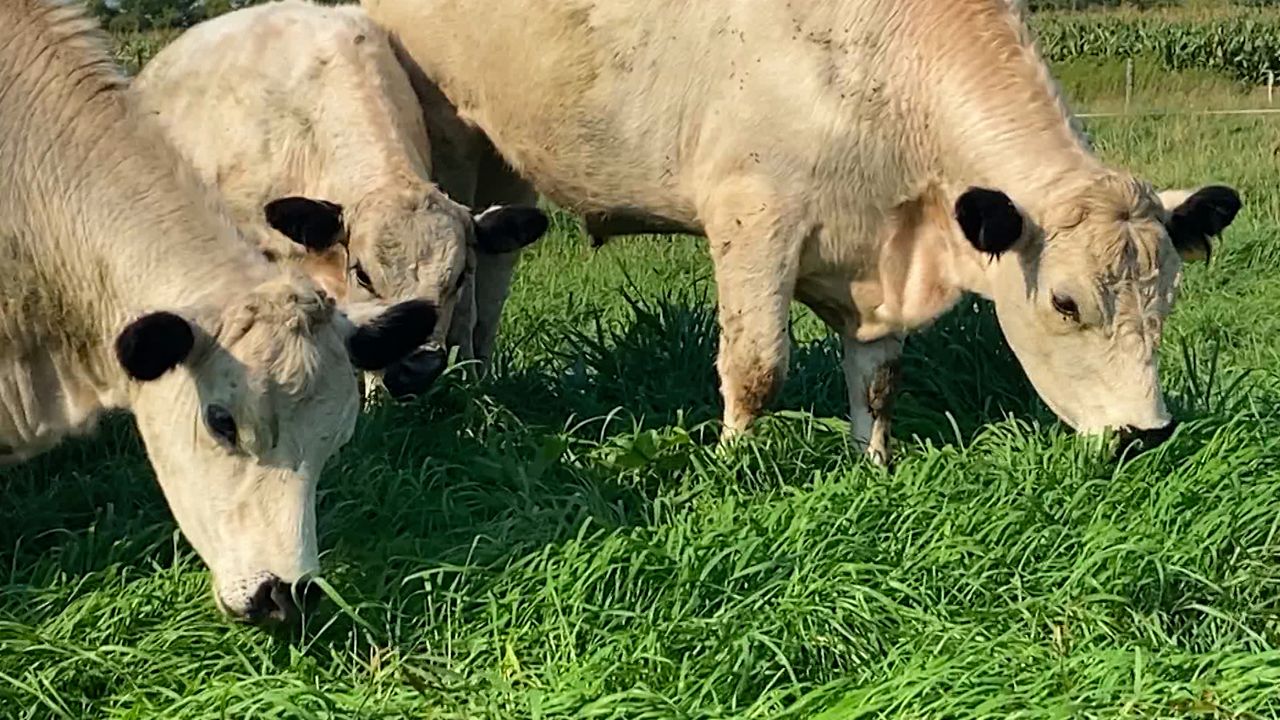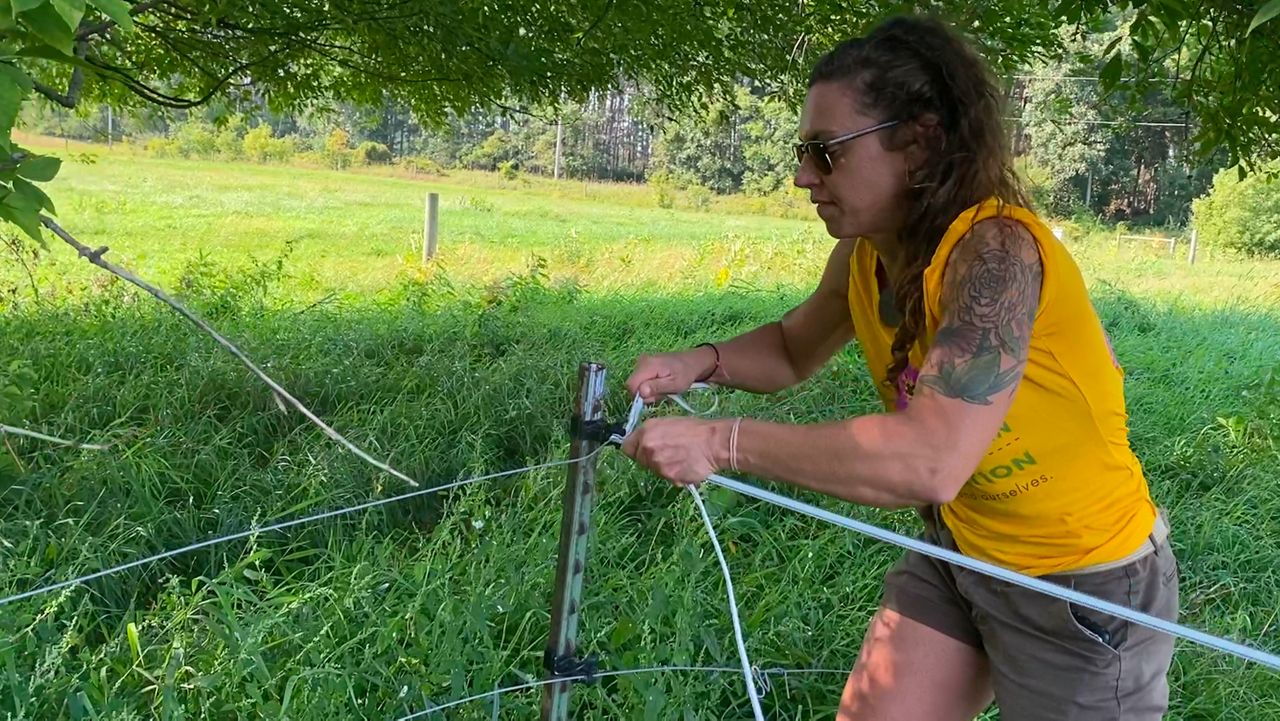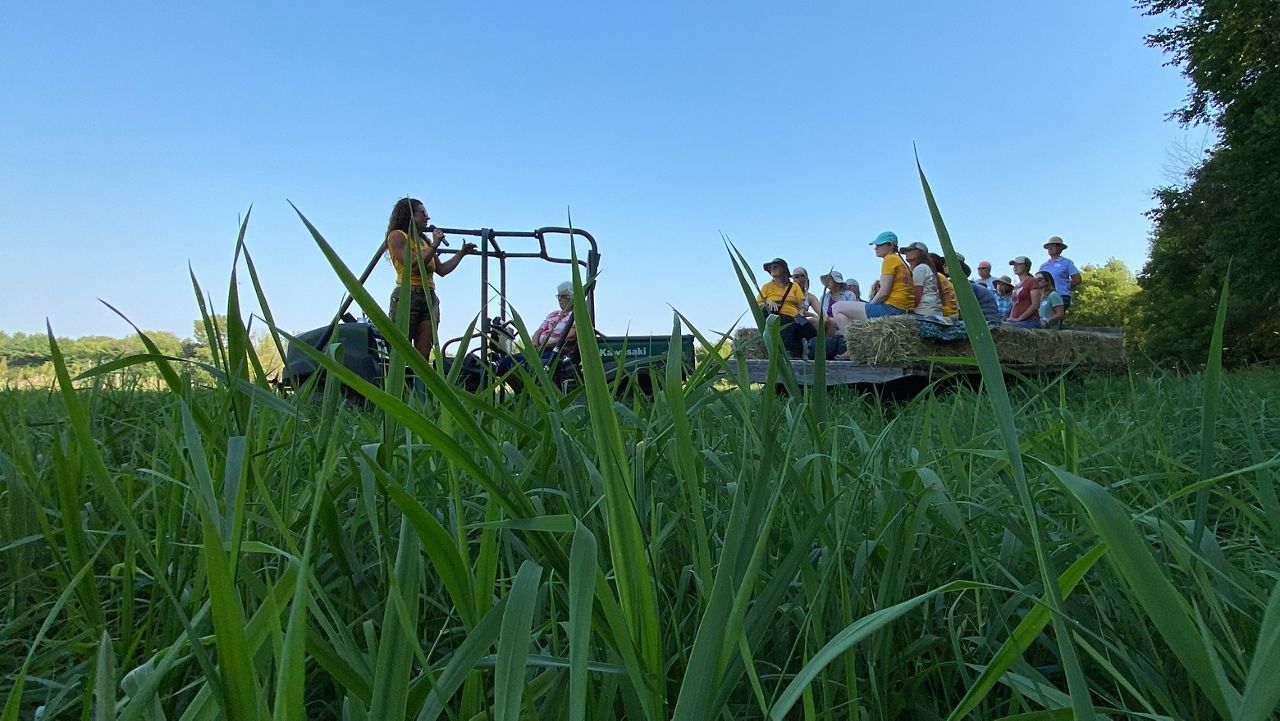NEW LONDON, Wis. — Rachel Bouressa worked fast, stringing a new fence so her cattle could move and feed on a fresh section of grass.
What You Need To Know
- Bouressa Family Farms raises grass-fed beef cattle
- The group, Wisconsin Women in Conservation, toured the farm and shared ideas
- Bouressa’s cattle help fertilize and maintain her land
“There’s about 50 to 60 head. Twenty-one babies this year. I also have yearling and finishing steers,” said Bouressa, owner of Bouressa Family Farms.
Bouressa’s animals are British White Park cattle, and she specializes in grass-fed beef. She’s a fifth-generation farmer, but started her operation in 2015.

“That was 13 Angus steer with no perimeter fencing. I was 37 weeks pregnant and had a two-year-old. I chased animals all over the neighborhood, probably more than I would like,” said Bouressa.
Recently, she shared her experiences and knowledge on nature grazing with the Wisconsin Women in Conservation (WiWiC).
“What we aim to do is to bring women together, network, give them those connections between farmers, between resources. We help them achieve their dreams by bringing resources to them, and also kind of feel motivated looking at other people doing that,” said Esther Durairaj of Michael Fields Agricultural Institute, one of the organizations that leads WiWiC.
The WiWiCgroup includes veteran farmers, like Bouressa, and those just getting started.

“My favorite thing to do is talk about farming with other farmers, especially when it comes to grazing and soil health,” explained Bouressa. “After the soil, our greatest resource as farmers is each other. Farmers learn best from other farmers who have gone through it and done it, and can speak from their personal experience.”
In the group's meeting, Natural Resources Conservation Service led a demonstration that showed how different soil covers affect runoff. Efforts like these lead back to the organization's goal of expose women landowners — a growing demographic — to new and different conservation techniques.
“There are a lot of female-owned farms out there and they haven’t really been involved in a lot of our conservation programs in the past,” said Lisa Neuenfeldt, Natural Resources Conservation Service. “It’s important to get them in the door, feel involved and get them educated on what’s out there to help farmers. They’re kind of an underserved group.”
Bouressa said she uses her cattle as a tool to fertilize and maintain her pastures. The demonstration seemed to make clear her soil conservation practices, a well-managed pasture that retains rainwater and limits farm runoff.
“When we did that rainfall simulator, and you see that soil go into the water, that’s what is causing the algae blooms. If we can incentivize and encourage people to do more permanent perennial cover, it’s benefiting all of us,” said Bouressa.

Later on, Bouressa took the group on a wagon tour of her land and fielded questions. For those who may be on the fence about getting into farming, Bouressa also offered advice.
“Just don’t be intimidated. There are other women farmers all over, other like-minded women. There are groups like this. There are resources available. Don’t be intimidated,” said Bouressa.



